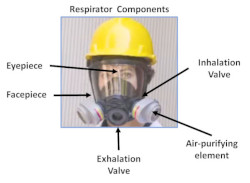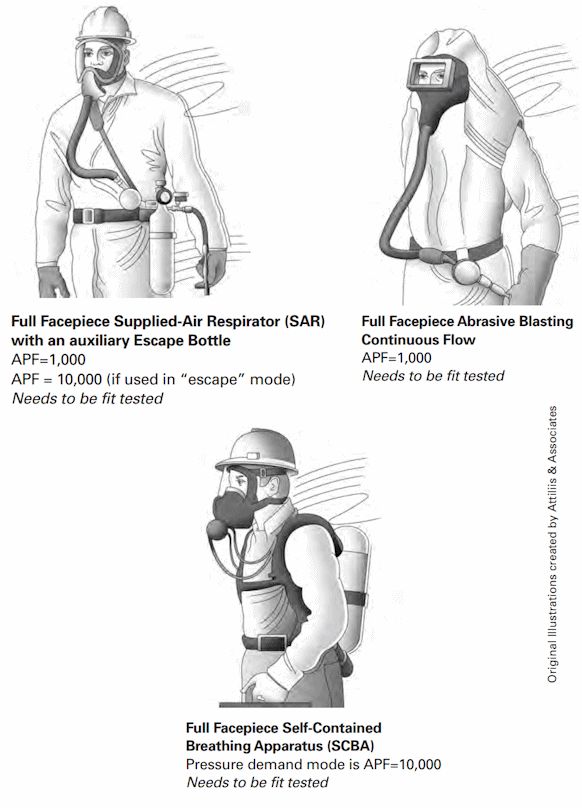Respiratory Protection
Wearing respiratory protective devices to reduce exposure to airborne contaminants is widespread in the industry.
The purpose of a respirator is to prevent the inhalation of harmful airborne substances and/or an oxygen-deficient atmosphere.
Respirators are of two general "fit" types, tight-fitting and loose-fitting.
- The tight-fitting respirator is designed to form a seal with the face of the wearer. It is available in three types: quarter mask, half mask, and full facepiece. Tight-fitting respirator components typically include the following:
- a facepiece,
- an eyepiece, (full-facepiece mask)
- an inhalation valve,
- an exhalation valve, and
- an air source, or an air-purifying element.
- The loose-fitting respirator has a respiratory inlet covering that is designed to form a partial seal with the face. These include loose-fitting facepieces, as well as hoods, helmets, blouses, or full suits, all of which cover the head completely. The best known loose-fitting respirator is the supplied air hood used by the abrasive blaster.
Atmosphere-supplying respirators have a source of air and consist of two types:
- Self-contained breathing apparatus (SCBAs) which supply air from a source carried by the user.
- Supplied-air respirators (SARs) which supply air from a source located some distance away and connected to the user by an air-line hose. Supplied-air respirators are sometimes referred to as air-line respirators.
Air-purifying respirators (APRs), on the other hand, do not have a separate air source. Instead, they use ambient air which is "purified" through a filtering element before inhalation. They are grouped into three general types:
- particulate removing,
- vapor and gas removing, and
- combination.
Elements of APRs that remove particulates are called filters, while vapor and gas removing elements are called either chemical cartridges or canisters. Filters and canisters/cartridges are the functional portion of APRs, and they can generally be removed and replaced once their effective life has expired. The exception would be filtering facepiece respirators (commonly referred to as "disposable respirators," "dust masks," or "single-use respirators"), which cannot be cleaned, disinfected, or resupplied with an unused filter after use.
Knowledge Check Choose the best answer for the question.
1-3. Which type of respirator does not have a separate air source?
You forgot to answer the question!


